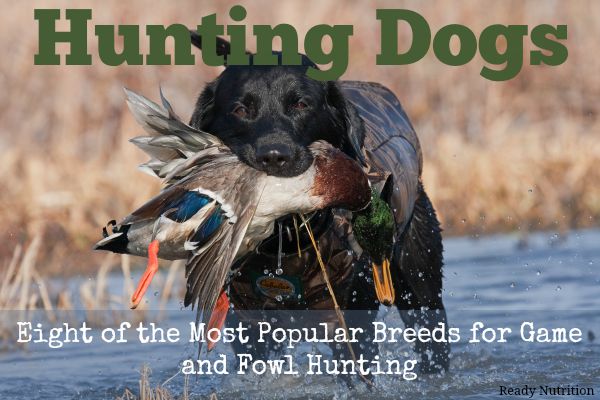
The value and utility of a good hunting dog cannot be overstated. Our history with dogs goes back thousands of years, but it’s only been within the last few hundred years that we’ve started specializing breeds towards particular game. Just about any dog will have prey drive- the instinctive inclination of a carnivore to find, pursue, and capture prey- but hunting dogs take that to a new level.
There has been much debate over the origins of the modern dog (Canis lupus familiaris) and why humans domesticated them in the first place. Some scientists have postulated that we owe our big brains to the co-evolution we share with dogs. But this co-evolution came at a price: the protein provided by this partnership and our dependence on them was responsible in part for our big brains and intellect at the expense of our senses.
Top Eight Best Hunting Dog Breeds For Hunting
Hunting without dogs can be very arduous and even dangerous for humans. Hunting dogs took over the tasks of cornering prey, leaping into frigid waters to retrieve birds, and the need to track quarry for miles. In this article, we’ll cover different breeds, their specific quarry, and the strengths of each breed.
Jack Russell Terrier (JRT)
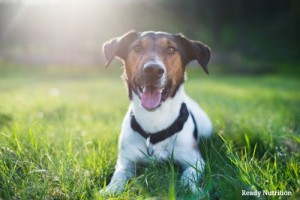
Highly intelligent, these dogs need to be worked. A JRT without a job will “go to ground” seeking their own diversion and will soon decimate your yard or garden. With their “take no prisoners” attitude and fearlessness, they need to be watched around larger dogs. It’s not uncommon for a JRT to take on a breed as large and fearsome as a Rottweiler.
They range in size between about 10 to 15 inches tall at the shoulders and weigh between about 14 and 18 pounds. The coat of the JRT can vary quite a bit from one line to the next -rough, smooth, or broken coated- and should be predominantly white with patches of black or brown.
Despite their high prey drive and robust personality, they also make excellent family pets. They bond with their family well, are affectionate towards well-behaved children, love to learn tricks, and make excellent alert dogs.
German Shorthair Pointer (GSP)
German Shorthair Pointers are known for their energy and puppy-like playfulness even as they mature. Used primarily for upland game, they’re also versatile enough to be used on waterfowl. They have plenty of natural prey drive, point and retrieve well, and hunt early in their lives. GSPs are known as “out-of-the-box” hunters and make an excellent first-time hunting dogs that require minimal training due to their natural instincts.
Short-coated with a mostly white body and brown/liver colored spots, this medium to large breed dog should stand about 21 to 25 inches at the shoulders and weigh between 45-70 pounds depending on gender. It has compact webbed feet which make them good dogs for both land and water. GSP coats require little care, but they do tend to shed.
GSPs can make very good family dogs as well as long as they are socialized and given enough exercise. These high-energy dogs can become stand-offish, destructive, and develop separation anxiety if not provided with training and leadership.
Pointer (English Pointer)
This dog is bird-obsessed and stops at nothing in it’s pursuit of feathers. The extremely high prey-drive of the Pointer makes it an excellent bird dog in all terrains and also makes it a dog for more experienced hunters. These dogs are not suitable for backyards and apartments. They’ve retained much of the instincts they were selectively bred for and can become easily bored, headstrong, and destructive if not given enough exercise and stimulation. A bored pointer, especially one that is not contained by fencing or other means, will chase anything that moves. However, it’s their amazing tirelessness that makes them the epitome of an upland bird dog.
Pointers have short sleek coats which make for easy grooming, but care must also be taken to insure they don’t get too cold. For this reason, Pointers are used mainly on land birds and not waterfowl. They come in white or white with liver, black, lemon, or orange patches and spots. They range from 23 to 28 inches at the shoulder and weight between 44 to 75 pounds.
Golden Retriever
Lovable, well-mannered, easy going dogs with beautiful creamy-to-golden silky coats has made the Golden Retriever one of the most popular “pet” type dogs in America today. This has also been one of the worst things that could have happened to this fantastic hunting dog.
Once popular with hunters, care must now be taken when selected them to find one where looks haven’t trumped performance. However, it is still possible to find dogs with both brains and beauty.
Golden Retrievers have excellent noses, are hard workers, and are highly trainable. Their intense desire to please, coupled with their intelligence, makes them one of the best hunting buddies around. They’ll tirelessly sit in cold, wet, muddy conditions just happy to be by your side and are equally willing to retrieve all day. So much so, that they sometimes seem to enjoy the retrieving as much to please you as they do for their own fun.
Their intense desire to please is a blessing and a curse. Heavy-handed trainers can easily cause a Golden Retriever to shut down. They’re very intelligent dogs, methodical in their approach, and are best trained using positive rewards instead of punishment. A Golden that is punished too often can sometimes become confused about what it’s owner wants and in its eagerness to please will lose focus of the task at hand.
Chesapeake Bay Retriever
Chesapeake Bay Retrievers, or “Chessies” as they are affectionately known by their many admirers, are one of the few American-made dogs. Since they have never been one of the more popular dog breeds, their instincts and hardiness has not been diluted by breeding towards pet standards.
Chessies are one of the larger hunting dogs and are capable of withstanding frigid conditions. Physically tough with a commanding presence, these dogs also make good guard dogs. Their coats are designed to be water resistant- the top coat is thick, oily, and short and their undercoat is fine but very dense. Like all water dog breeds, they shed heavily all year long and their coat requires more care. Over bathing Chessies will cause the naturally protective oils in their coat to break down, so they should only be bathed when needed. However, a shedding tool, will help keep the oils distributed and will keep the dog much more comfortable by removing dead, dirty hair from their coat.
Chessies are not as easy-going as other retriever breeds and may be harder to train. If the Golden Retriever is on one end of the scale wanting to please its owner, the Chessie is on the other. They also tend to be naturally distrustful of strangers. If you’re looking for an excellent, extremely hardy water dog that will also guard your equipment and are willing to put in the time to train a strong-willed dog, this is the dog for you.
Labrador Retriever
No list would be complete without the Labrador Retriever. This dog might be best described as the Jack of All Trades dog. Originally bred to haul in nets for fisherman, this dog quickly became the ubiquitous water dog, family pet, and is even known to flush birds and rabbits and track deer. A favorite of families and hunters alike, this is the do everything dog.
Labs come in a variety of colors (all of them solid) from a pale creamy yellow to a darker, yellow color, in red/chocolate, and solid black. They should weigh between 55 and 75 pounds, with a short, dense water-repellent coat, and an “otter tail” which is using like a rudder in the water.
Despite its popularity as a pet, this is one breed that has retained its hunting instincts (care should always be taken to choose from a working line, though) and versatility. A Lab loves everybody, makes an excellent family dog, and gets along with other pets. Labs don’t make good guard dogs, though, because of their friendly nature. They are Everybody’s dog.
Redbone Coonhound
The Redbone Coonhound, also known as the Redbone, is a true American dog that is easy recognizable by it’s beautiful deep red coat. Originally bred to pursue and tree game, this dog does well hunting everything from raccoons to larger game like bobcats, mountain lions, and bear. Sweet-tempered and loving at home, this dog makes an excellent family pet provided it’s given enough exercise. They love being with people and are excellent with children. The Redbone has a strong desire to please its master and loves attention and petting. This highly affectionate dog does best when raised as one of the family and may become anxious if left alone in a kennel or yard. They’re also extremely agile and have been known to scale six-foot fences in search of company or game. Redbones are bred to be vocal and if left alone too long, they’ll let all your neighbors know it.
Redbones tend to be hotter-nosed than other coonhounds and able to work all types of weather and terrain. These are smart, independent dogs, able to pursue and tree game off-leash. They have a distinctive LOUD bark that’s known as a “chop and holler” that alerts the hunter of the direction they’re heading in pursuit. Like other coonhounds, the bark is distinctive- one kind of bark for pursuit and another kind of bark once the quarry has been treed. On a hunt, the affectionate, loving family dog turns into a fearless, relentless hunter.
American Pit Bull
The American Pit Bull is either loved or loathed. Originally bred in the United Kingdom to bait bulls and to be used in dog fights for the entertainment of the struggling classes, these dogs became popular on American homesteads as hunters and hog catchers. They were also known as “Nanny Dogs” – loving, loyal, affectionate dogs entrusted to keep the small children of the homestead safe.
As farms in America dwindled and more people moved to urban areas, they took their Pit Bulls with them. Over time, people seemed to forget that these dogs were once tremendously popular, versatile homestead dogs and soon only knew them as the choice for drug dealers, dog fighting, and crime. Thanks to a concerted effort by Pit Bull lovers everywhere and a few avid hunters, these dogs are once again being recognized for their tremendous stamina, boar and bear hunting abilities, and as a loving, family pet deserving of a place in the home.
Pit Bulls are usually hunted with hounds. Forty-five years ago, my family cross-bred Pit Bulls and Redbones. These cross-breeds were primarily used for hunting bear and boar. Our stud dog, Big Bill was a Pit Bull. My dad also kept several Redbone bitches that he bred Big Bill to and also used the Redbone bitches when hunting smaller game like raccoons. I have fond memories of spending my days, and especially my nap times, snuggled against Big Bill as he stretched out in a spot of sunshine. The very first dog that was just my own was a runt offspring of Big Bill and Willard (yes, Willard was a Redbone bitch- I don’t know why my dad gave her a male name) that I named Little Bit.
During hunting season, my dad would load Big Bill and the Redbones early in the morning to go off to hunt. The Redbones were released to find the scent of a pig. Their melodic chop-and-holler bay alerted him when the pig had stopped running as was being held at bay. He’d follow the sound of the Redbone and that’s when Big Bill earned his keep.
Once quarry has beEn held at bay, there are few dogs that can match the bravery and tenacity of a Pit Bull on large game. As the name “catch dog” implies, it’s the job of the Pit Bull to hold on to the large game no matter what until the hunter can safely come in close enough to make the kill.
Choosing the Right Dog
No matter what kind of hunting you plan on doing, there’s a breed for you. There are many more excellent hunting dogs than the ones listed here, but hopefully this will give you a start on researching which is best for your needs.
A good hunting dog can fit in burrows, track, pursue, tree, point, retrieve, flush, jump in frigid waters, and hold onto large, dangerous game so you don’t have to. They can be your best guard dog, your constant companion, the protector of your children, and sleep at the foot of your bed keeping your feet warm. In short, hunting dogs truly are man’s (and woman’s!) best friend.
This article was originally published at Ready Nutrition™ on September 21st, 2015


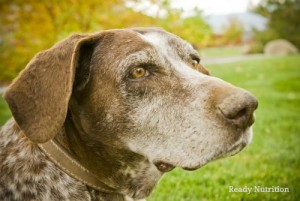
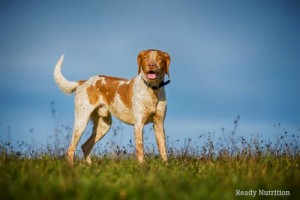
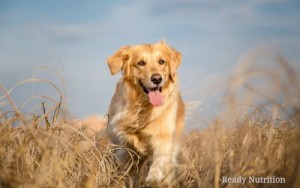
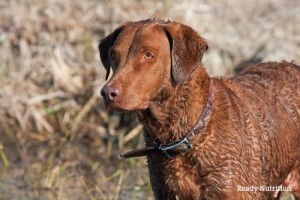
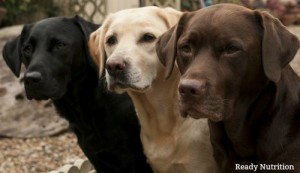
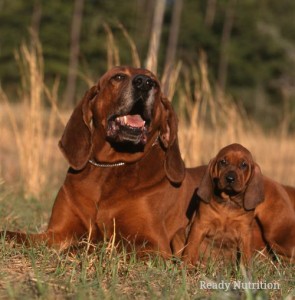
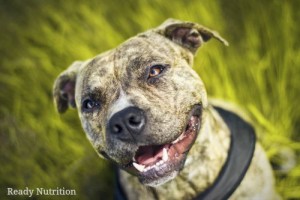





I would include the Nova Scotia Duck Tolling Retriever as a hunting dog worth getting to know. They toll or lure ducks and geese close for the shot and retrieve the bird. They are also a good upland flushing dog with a few tollers pointing. They make a wonderful family companion dog and are pretty wash n wear in the grooming department. Their versatility is unmatched as they participate in so many dog sports from obedience to scentwork to dock diving to agility and more.